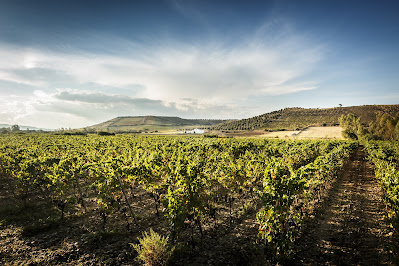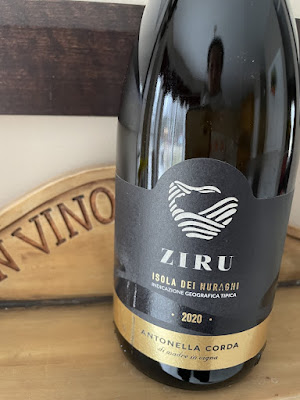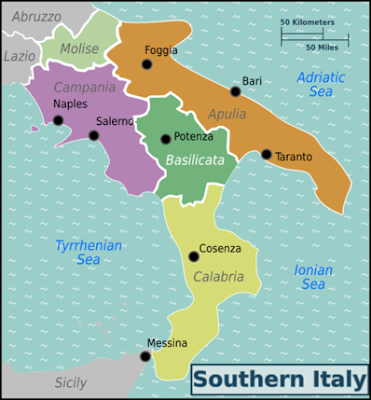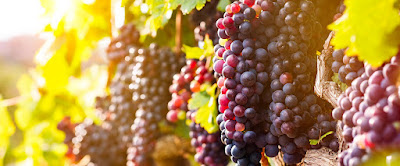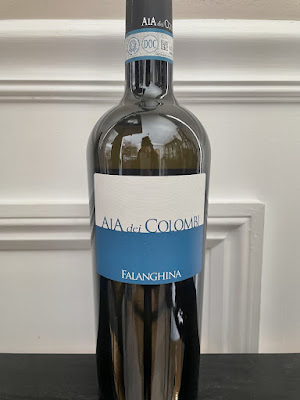We keep off April with our Italian Food, Wine & Travel group covering the regions of Calabria and Sardinia. Our host, Katarina of Grapevine Adventures, has provided a preview into these regions. I’ll be starting off the month with Antonella Corda of Sardinia, 5th generation of wine growers, whom hails from the respected Argiolas family.
Antonella inherited her family business in 2010. Her grandfather, Antonio Argiolas, was the first to import modern technology to the island of Sardinia after his travels to California. She grew up around vineyards since she was a young child and later studied at the University of Sassari to become an agronomist with further studies to obtain a master qualification in wine management from the respected Edmund Mach Foundation in the Trentino-Alto Adige region of northern Italy. Her parents have been a strong influence with her mother’s teachings of the wine begins in the soil driving a sense of love for the land and her fathers passion for the business.
Antonella’s winery is located in Serdiana in the southern part of Sardinia about 12 miles north of Cagliari in the lower Campodiano. This territory is rich in vineyards, olives and grain production. Antonella’s property spans close to a 100 acres with 37 acres dedicated to vines, 30 acres of olive groves and the rest land cultivated for crop rotation. She has 2 vineyard sites, Mitza Manna and Mitsa S’ollastu. Mitza Manna was her grandfather’s favorite vineyard about 650 feet above sea level with 15 acres of soils consisting of sandy, clay, calcium and loam. The vines consist of Vermentino and Nuraga white grapes. The 24 acres at Mitsa S’ollastu border the town of Ussana and are dedicated to Vermentino and Cannonau grapes on a bed of the river consisting mostly of pebbles with some sand, clay and loam.
I love this quote from Antonella’s website, “loving the land means showing the same respect you will have for your mother”. I feel this exudes her love and respect for the land and will allow her to continue her passion and hopefully pass it on for generations. Her hard work and dedication to carry out the family’s legacy was recognized in 2019 by the Gambero Rosso when she received the “Emerging Winery of the Year”.
I was able to connect with Antonella to ask some further questions to understand more about the land, her style and what is in store for Antonella Corda.
1.What
have been some of your biggest challenges since you started making wine?
There have been several heterogeneous
challenges. Since I manage a small company, I came across situations being
completely different from one another. The biggest challenge has been the
weather in 2018, an extremely difficult vintage. The heavy rains resulted in
troubles for the vineyard, which was being turned organic during that period,
pointing out the difficulties these climate changes can cause.
2.What
drove you to become organic?
A rational approach drove me towards a
sustainable way, which for the vineyards translates into organic. Since the
beginning, it was clear that the organic allowed us to take more care of the
environment and to make healthier wines, as a true expression of their area of
origin.
3.What's
unique about this area of Serdiana where you grow your grapes?
The area of Serdiana is peculiar for its deep
soils where sandstone marls provide wines with freshness and elegance.
Serdiana’s elegant wines stand out for their sapidity and the typical scents of
the Mediterranean scrub.
4.How
would you describe your style of winemaking?
A respectful style towards the grape and its
origin, authentic winemaking aimed at preserving the scents of indigenous grape
varieties, seen as expressions of Serdiana.
5.Who is your
mentor and whom do you admire in the industry?
I don’t have a mentor, I can just think of
different people I met during these years. In the hardest times I think about
my grandad Antonio Argiolas’s approach towards work and people and my grandmum
Evangela Zuddas’s strength, a widow who managed a company on her own in harder
times.
6.What
made you choose the Nuraga grape to work with?
The Nuragus grape is one of the oldest
indigenous grape varieties. It was the most important white grape in our area
and in South Sardinia as well. We’re now rediscovering it and its modernity due
to its relevant freshness and low alcohol content. At the beginning, it was my
mother who told me about wonderful Nuragus growing in that area.
7.I
noticed there was some Syrah in the 2021 Cannonau bottle. Do you grow
this grape as well?
Yes, we grow Syrah too, a small percentage in
the vineyard gathered together with Cannonau to make a blend not hiding, but
rather highlighting the characteristics of Cannonau.
8.What's
next for you and the winery?
The winery is relatively young, and I reckon
some important objectives have been achieved, but I would like to invest in
hospitality and make people smell the area scents holding a glass.
The Wines
I had the fortune of sampling some of Antonella Corda’s wonderful wines. The 2021 Antonella Corda Cannonau di Sardegna DOC is made of 90% Cannonau and 10% Syrah. In the 2016 vintage this wine won the esteemed Tre Bicchieri. Vinified in stainless steel and spending 6 months of aging in stainless steel and non-toasted barrique. The wine was translucent and lightly ruby colored. Inviting aromas of cherry and raspberries with a touch of white pepper. This wine was medium-bodied with juicy red fruit flavors filling the palate with a touch of spice. I found this wine very approachable and not as heavy as some other Cannonau I have previously tried. I could picture this with a slight chill as the days slowly begin to become warmer here in New England. ABV14.5% SRP $32.99
The 2022 Antonella Corda Vermentino di Sardegna DOC is made from 100% Vermentino. The grapes are hand harvested and vinified 6 months in steel tanks on the yeast. The wine was pale straw colored with greenish hues. A fragrant nose with grassy aromas, grapefruit, lemon and some tropical notes. Almost reminded me of a New Zealand Sauvignon Blanc. A mouthwatering acidity up front that carried throughout. Crisp with minerality and orange and lemon citrus flavors. A little warmth on the throat with the fruit lingering through the finish that softened the palate. ABV 14% SRP $24.99
The 2020 Antonella Corda Ziru Isola dei Nuraghi IGT is naturally unfiltered and made from Vermentino grapes that are fermented on the skins and vinified and aged in amphora. The name Ziru is the ancient local name for the jars that stored oil and wine. Straw colored, the aromas were floral, but less intense than the prior wine. It had richer more tropical notes with some vanilla nuances. The medium-bodied wine had a palate that was balanced and round with persistent tropical notes. A savory wine with a silky/oily texture. ABV 14% SRP $45
Thirsty for more on Calabria and Sardinia? Read more from our fellow food and Italian wine lovers. You can also join us live on Twitter this Saturday at 11am EST @ #ItalianFWT. Hope to see you there!
- Wendy from A Day in the Life on the Farm reports about Planning a “Trip to France with our Son from Germany while Sipping a Wine from Sardegna”
- Gwendolyn from Wine Predator shares “On Italian Island Time: Vermentino and Cannonau di Sardegna with Pecorino and Fish Stew”
- Camilla from Culinary Cam cooks “Mirto di Sardenga-Kissed Braised Ribs”
- Cindy from Grape Experiences shares “Spring in Sardinia: Surrau “Branu” Vermentino Di Gallura DOCG with Spaghetti con le Vongole (Spaghetti and Clams)”
- Andrea from The Quirky Cork is “Exploring Sardegna through Vermentino & Monica”
- Robin from Crushed Grape Chronicles features “Monica and Fregola – a bit of Sardegna at the table”
- Your host Katarina from Grapevine Adventures shares about “Two Authentic Expressions of Native Grapes from Calabria and Sardinia”
Importer: Shiverick Imports
*These wines were provided as samples, but opinions are all my own.

